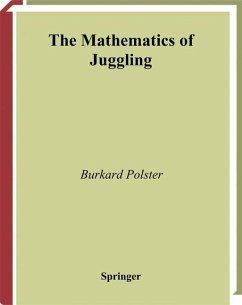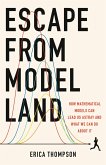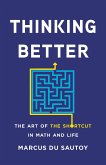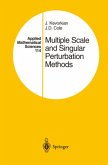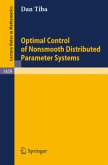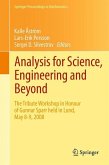The author captures a treasure trove of mathematics used to model the different activities in a juggler's repertoire. He provides a stimulating collection of mostly self-contained mathematical essays about a wide range of disciplines like combinatorics, graph theory, knot theory, mechanics, differential equations, control theory, and robotics. Anybody who is not put off by the word "mathematics" in the title of this book should have a good time reading it.
Learn to juggle numbers! This book is the first comprehensive account of the mathematical techniques and results used in the modelling of juggling patterns. This includes all known and many new results about juggling sequences and matrices, the mathematical skeletons of juggling patterns.
Many useful and entertaining tips and tricks spice up the mathematical menu presented in this book. There are detailed descriptions of jugglable and attractive juggling sequences, easy zero-gravity juggling, robot juggling, as well as fun juggling of words, anti-balls, and irrational numbers.
The book also includes novel, or at least not very well known connections with topics such as bell ringing, knot theory, and the many body problem. In fact, the chapter on mathematical bell ringing has been expanded into the most comprehensive survey in the literature of the mathematics used by bell ringers.
Accessible at all levels of mathematical sophistication, this is a book for mathematically wired jugglers, mathematical bell ringers, combinatorists, mathematics educators, and just about anybody interested in beautiful and unusual applications of mathematics.
Learn to juggle numbers! This book is the first comprehensive account of the mathematical techniques and results used in the modelling of juggling patterns. This includes all known and many new results about juggling sequences and matrices, the mathematical skeletons of juggling patterns.
Many useful and entertaining tips and tricks spice up the mathematical menu presented in this book. There are detailed descriptions of jugglable and attractive juggling sequences, easy zero-gravity juggling, robot juggling, as well as fun juggling of words, anti-balls, and irrational numbers.
The book also includes novel, or at least not very well known connections with topics such as bell ringing, knot theory, and the many body problem. In fact, the chapter on mathematical bell ringing has been expanded into the most comprehensive survey in the literature of the mathematics used by bell ringers.
Accessible at all levels of mathematical sophistication, this is a book for mathematically wired jugglers, mathematical bell ringers, combinatorists, mathematics educators, and just about anybody interested in beautiful and unusual applications of mathematics.
From the reviews:
"This book is an interesting and comprehensive introduction to the mathematics of juggling. ... This book ... helps in making mathematics more popular. ... The book surveys many interesting juggling-related parts of mathematics and life. ... It is the book under review that contains the most comprehensive introduction to the mathematics of bell ringing and the corresponding toss juggling. ... I am pleased to recommend this nice book to everyone who is interested in the topic." (Gábor Czédli, Acta Scientiarum Mathematicarum, Vol. 71, 2005)
"This book is the first comprehensive account of the mathematical techniques and results used in the modeling of juggling patterns. This includes all known and many new results about juggling sequences and matrices, the mathematical skeletons of juggling patterns." (Hugo S. Sun, Mathematical Reviews, Issue 2004 c)
"Until now the contributions to the mathematics of juggling have been scattered in scientific journals, juggling magazines, and articles posted on the newsgroup rec.juggling, the present book provides the first comprehensive and unifying treatment of this subject. ... it provides in my opinion essential reading for all mathematically minded jugglers. Furthermore ... the material of the book could easily be used to communicate to a general audience ... that mathematics and, in particular, pure mathematics can be a lot of fun." (G. Sorger, IMN - Internationale Mathematische Nachrichten, Vol. 57 (193), 2003)
"Learn to juggle numbers! This book is the first comprehensive account of the mathematical techniques and results used in the modelling of juggling patterns. This includes all known and many new results about juggling sequences and matrices, the mathematical skeletons of juggling patterns. Many useful and entertaining tips and tricks spice up the mathematical menu presented in this book. ... The book also includes novel, or at least not very well-known, connections with topics such as bell ringing, knot theory, and the many-body problem." (L'ENSEIGNEMENT MATHEMATIQUE, Vol. 49 (1-2), 2003)
"Mathematics constitutes an optic through which one may approach the entirety of the world. ... As we see in The Mathematics of Juggling, the combinatorial aspect in particular turns out quite rich, with theorems turning up of surprising depth. One even finds a musical connection in a chapter devoted to juggling patterns based on change ringing. Summing Up: ... Recommended. Upper-division undergraduates through faculty." (D. V. Feldman, CHOICE, July, 2003)
"Frankly, I haven't seen a lot in the main stream lately that look interesting to me, but I did come across a few interesting books in the less commonly tread areas. Even more unusual, but more accessible, is The Mathematics of Juggling, by Burkard Polster (also published by Springer). I definitely recommend this book." (Steven Roman, The Bulletin of Mathematics Books, Issue 43, February, 2003)
"The book is the first comprehensive account of the mathematical techniques and results used in the modeling of juggling patterns. ... Accessible at all levels of mathematical sophistication, this is a book for wired jugglers, mathematical bell ringers, combinatorists, mathematics educators, and just about anybody interested in beautiful and unusual applications of mathematics." (Zentralblatt für Didaktik der Mathematik, February, 2003)
"If you thought juggling was all about throwing things up in the air and not dropping them, this book will set you straight. It's a ... dense introduction to the Maximal Prime Loops, Stirling Numbers and four-bell Schreier right coset graphs that underly juggling number theory. If you're a physicist or a mathematician you may find this interesting. ... This would make a good set text for any university that offers Juggling Studies for Engineers course ... ." (Peter Budden, Focus, June, 2003)
"In this book Burkard Polster records and develops the mathematical description of juggling in full detail. ... The author does an excellent job of summarizing the work of the man who not only invented information theory but also the first juggling robot and mathematical theories of the art. ... If you think a book called The Mathematics of Juggling sounds interesting, then you will enjoy Polster's comprehensive and fair account." (Ken Zetie, Physics World, June, 2003)
"This book is an interesting and comprehensive introduction to the mathematics of juggling. ... This book ... helps in making mathematics more popular. ... The book surveys many interesting juggling-related parts of mathematics and life. ... It is the book under review that contains the most comprehensive introduction to the mathematics of bell ringing and the corresponding toss juggling. ... I am pleased to recommend this nice book to everyone who is interested in the topic." (Gábor Czédli, Acta Scientiarum Mathematicarum, Vol. 71, 2005)
"This book is the first comprehensive account of the mathematical techniques and results used in the modeling of juggling patterns. This includes all known and many new results about juggling sequences and matrices, the mathematical skeletons of juggling patterns." (Hugo S. Sun, Mathematical Reviews, Issue 2004 c)
"Until now the contributions to the mathematics of juggling have been scattered in scientific journals, juggling magazines, and articles posted on the newsgroup rec.juggling, the present book provides the first comprehensive and unifying treatment of this subject. ... it provides in my opinion essential reading for all mathematically minded jugglers. Furthermore ... the material of the book could easily be used to communicate to a general audience ... that mathematics and, in particular, pure mathematics can be a lot of fun." (G. Sorger, IMN - Internationale Mathematische Nachrichten, Vol. 57 (193), 2003)
"Learn to juggle numbers! This book is the first comprehensive account of the mathematical techniques and results used in the modelling of juggling patterns. This includes all known and many new results about juggling sequences and matrices, the mathematical skeletons of juggling patterns. Many useful and entertaining tips and tricks spice up the mathematical menu presented in this book. ... The book also includes novel, or at least not very well-known, connections with topics such as bell ringing, knot theory, and the many-body problem." (L'ENSEIGNEMENT MATHEMATIQUE, Vol. 49 (1-2), 2003)
"Mathematics constitutes an optic through which one may approach the entirety of the world. ... As we see in The Mathematics of Juggling, the combinatorial aspect in particular turns out quite rich, with theorems turning up of surprising depth. One even finds a musical connection in a chapter devoted to juggling patterns based on change ringing. Summing Up: ... Recommended. Upper-division undergraduates through faculty." (D. V. Feldman, CHOICE, July, 2003)
"Frankly, I haven't seen a lot in the main stream lately that look interesting to me, but I did come across a few interesting books in the less commonly tread areas. Even more unusual, but more accessible, is The Mathematics of Juggling, by Burkard Polster (also published by Springer). I definitely recommend this book." (Steven Roman, The Bulletin of Mathematics Books, Issue 43, February, 2003)
"The book is the first comprehensive account of the mathematical techniques and results used in the modeling of juggling patterns. ... Accessible at all levels of mathematical sophistication, this is a book for wired jugglers, mathematical bell ringers, combinatorists, mathematics educators, and just about anybody interested in beautiful and unusual applications of mathematics." (Zentralblatt für Didaktik der Mathematik, February, 2003)
"If you thought juggling was all about throwing things up in the air and not dropping them, this book will set you straight. It's a ... dense introduction to the Maximal Prime Loops, Stirling Numbers and four-bell Schreier right coset graphs that underly juggling number theory. If you're a physicist or a mathematician you may find this interesting. ... This would make a good set text for any university that offers Juggling Studies for Engineers course ... ." (Peter Budden, Focus, June, 2003)
"In this book Burkard Polster records and develops the mathematical description of juggling in full detail. ... The author does an excellent job of summarizing the work of the man who not only invented information theory but also the first juggling robot and mathematical theories of the art. ... If you think a book called The Mathematics of Juggling sounds interesting, then you will enjoy Polster's comprehensive and fair account." (Ken Zetie, Physics World, June, 2003)

